 Murder at the Merton Library (Wrexford & Sloane, #7) by Andrea Penrose
Murder at the Merton Library (Wrexford & Sloane, #7) by Andrea Penrose Format: eARC
Source: supplied by publisher via NetGalley
Formats available: hardcover, large print, paperback, ebook, audiobook
Genres: historical fiction, historical mystery, mystery, regency mystery
Series: Wrexford & Sloane #7
Pages: 361
Published by Kensington Books on September 26, 2023
Purchasing Info: Author's Website, Publisher's Website, Amazon, Barnes & Noble, Kobo, Bookshop.org, Better World Books
Goodreads
Responding to an urgent plea from a troubled family friend, the Earl of Wrexford journeys to Oxford only to find the reclusive university librarian has been murdered and a rare manuscript has gone missing. The only clue is that someone overheard an argument in which Wrexford’s name was mentioned. At the same time, Charlotte—working under her pen name, A. J. Quill—must determine whether a laboratory fire was arson and if it’s connected to the race between competing consortiums to build a new type of ship—one that can cross the ocean powered by steam rather than sails—with the potential to revolutionize military power and world commerce. That the race involves new innovations in finance and entrepreneurship only adds to the high stakes—especially as their good friend Kit Sheffield may be an investor in one of the competitors. As they delve deeper into the baffling clues, Wrexford and Charlotte begin to realize that things are not what they seem. An evil conspiracy is lurking in the shadows and threatens all they hold dear—unless they can tie the loose threads together before it’s too late . . .
My Review:
As is usual in the Wrexford & Sloane series, the titular murder is only the beginning of the mystery. Also, as usual, the reader both is and is not a witness to said murder. We hear what is said, and done, but we get few, if any clues about who the perpetrator might be. At least, not until Wrex and his wife Charlotte discover that the deed was done – and that it hits a little too close to home.
 No matter how much, or how sincerely, they promised each other that they wanted a bit of peace and quiet with no murder investigations at the end of the previous book in the series, Murder at the Serpentine Bridge.
No matter how much, or how sincerely, they promised each other that they wanted a bit of peace and quiet with no murder investigations at the end of the previous book in the series, Murder at the Serpentine Bridge.
(They promise each other the same at the end of this entry in the series. I’m getting the impression that THAT is going to be a recurring theme of the series – one of the VERY few things they promise each other and the rest of their family that is doomed to lay unfulfilled. On that other hand, if their lives were that peaceful, this marvelous series wouldn’t exist!)
The mystery in this particular entry in the series hits both close to home and reaches back into the past. It’s also a case of woulda, coulda, shoulda in more ways than one.
One of the regrets of Wrex’ life before he met Charlotte is related to the death of his younger brother, Thomas, during the recently concluded, or at least paused, Napoleonic Wars. (Napoleon is in exile on Elba in the process of becoming less “able” as that old palindrome had it, “Able was I ere I saw Elba.”
Wrex’ brother and his cohort died by treachery, as someone on the British side sold their location to the French for gold. But the identity of the traitor was never uncovered. Eight years later, the only survivor of Thomas’ unit finally figures out that identity – right before the man kills him in ice-cold blood.
Wrex owes it to his brother, owes it to his own past, that the traitor be unmasked and brought to justice. Meanwhile, his wife Charlotte, AKA the satirical cartoonist A.J. Quill, is mired in an investigation of her own in London, looking into the possibilities of corporate espionage that surround the race to solve an engineering problem that will, quite literally, change the world.
Several inventors say they are on the cusp of building a steam engine capable of powering a ship out of sight of land and out of the reach of fuel – across the vast oceans.
If Britain owns the solution, their naval power will be assured for centuries. If the newly-fledged United States figures it out first, the century will be theirs. If Russia manages to steal either the plans or the engineers who make them – or better yet both – they will become a superpower the likes of which they have not yet dreamed of.
The two cases, a murder in Oxford – at Merton Library, hence the title of the book – and theft, arson and fraud in London, shouldn’t REALLY have any relationship to each other. But there are few if any clues in either case, leading Wrex, Charlotte and their ever-growing found family to cast about for the tiniest of threads that might point them in the right direction.
Or any.
As those threads are gathered, they do point somewhere, but not anywhere that either Wrex or Charlotte imagined. Because those clues all point towards their two cases becoming one – even though neither of them believes that makes any sense at all.
But as another famous detective will have said, “When you have eliminated the impossible, whatever remains, however improbable, must be the truth.”
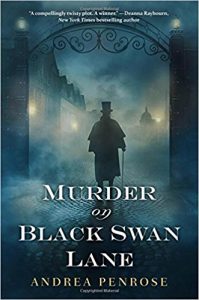 Escape Rating A-: I discovered this series last summer – another time when I was hunting for a good mystery series – and it has been an absolute delight every single time I’ve picked the series back up. But I held onto this entry because I’ve learned that no matter how great a series is – and this absolutely is – it just isn’t a good idea to read the series books too closely together no matter how much I’m tempted.
Escape Rating A-: I discovered this series last summer – another time when I was hunting for a good mystery series – and it has been an absolute delight every single time I’ve picked the series back up. But I held onto this entry because I’ve learned that no matter how great a series is – and this absolutely is – it just isn’t a good idea to read the series books too closely together no matter how much I’m tempted.
But when I picked up the eARC for the next book, Murder at King’s Crossing, last week, I decided it was time to get caught up, so here we are. Also, I just can’t resist a murder set in a library – even if the story doesn’t stay in the library quite as long as I might have liked.
I said at the top that this was a ‘woulda, coulda, shoulda’ kind of story. What I meant by that is that there are elements of both mysteries that were on the cusp of going a different way, or rather, in one case a character should have made a different choice, and in another, an invention would have happened IF real, historical circumstances had been just a bit different.
The macguffin that drives much of this story is almost real. Or rather, is in the process of becoming real but isn’t quite there yet. As this story takes place in 1814, steam power has been proven to work and is already revolutionizing transportation. Ocean-going vessels are the next big – really, really big – step. It’s a problem that is absolutely going to be solved and certainly was solved within the decade.
All of which means that the developments were oh-so-close and the stakes were oh-so-high, so it’s not surprising that the competition was equally as fierce, that corporate and government espionage was a very real factor, and that the possibilities for financial fraud were ridiculously high, giving that side of the mystery equation an air of plausibility, near-certainty, and hope triumphing over experience that felt very real.
At the same time, Wrex’ side of the mystery, the part that revolved around the death of his brother, was equally familiar but for different reasons. There have been other Regency-set mystery series where exactly this type of treason led to just this manner of death for someone close to the protagonist – with just the same desire for revenge and retribution motivating the investigator, whether amateur or professions, to bend more of the rules than is comfortable for either the character or the reader. (I know I’ve read at least one such book relatively recently, so if this plot sounds familiar to you and you recall what it was, please let me know!)
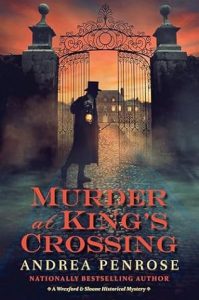 And on my third hand, one of the people caught up in this farrago clearly wasn’t onboard with all the deviltry involved, and could have had made much different choices, and we are confused by and feel for that character almost as much as Charlotte does.
And on my third hand, one of the people caught up in this farrago clearly wasn’t onboard with all the deviltry involved, and could have had made much different choices, and we are confused by and feel for that character almost as much as Charlotte does.
Overall and absolutely positively, I had a grand time with this entry in the series, as it tells two mysteries very well, feels marvelously steeped in its time and place, AND allows for character growth on the part of most of the members of the family. It certainly had this reader on the edge of their seat as everything built to an explosive crisis.
So now I’m twice as eager as I was before to start Murder at King’s Crossing, and am glad that I only have a few months to wait!

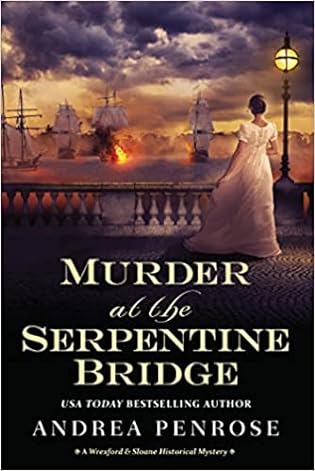 Murder at the Serpentine Bridge (Wrexford & Sloane, #6) by
Murder at the Serpentine Bridge (Wrexford & Sloane, #6) by  As the previous book in this series,
As the previous book in this series,  Meanwhile, everyone is chasing everyone else’s tails into danger, as the government’s intelligence services are unwilling to let the right hand know what the left hand is doing (shades of yesterday’s book) and everyone is unwittingly keeping vital clues from even their nearest and dearest.
Meanwhile, everyone is chasing everyone else’s tails into danger, as the government’s intelligence services are unwilling to let the right hand know what the left hand is doing (shades of yesterday’s book) and everyone is unwittingly keeping vital clues from even their nearest and dearest. Murder at the Royal Botanic Gardens (Wrexford & Sloane, #5) by
Murder at the Royal Botanic Gardens (Wrexford & Sloane, #5) by 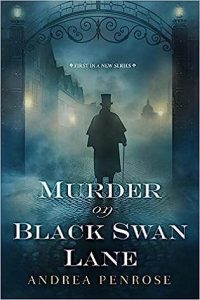 This fifth book in the
This fifth book in the 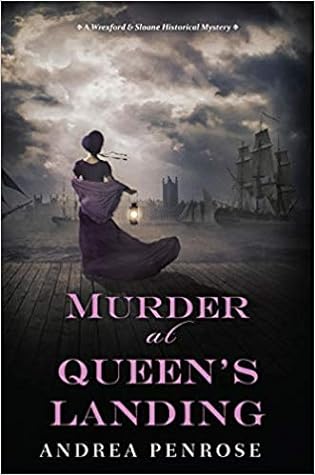 Murder at Queen's Landing (A Wrexford & Sloane Mystery, #4) by
Murder at Queen's Landing (A Wrexford & Sloane Mystery, #4) by 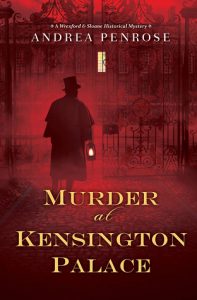 Escape Rating A: You wouldn’t think that it would be possible to make what is ultimately a financial crime be all that fascinating, but the machinations of arbitrage that turn out to be the center of this criminal conspiracy are both easy enough to follow and absolutely deadly in their application.
Escape Rating A: You wouldn’t think that it would be possible to make what is ultimately a financial crime be all that fascinating, but the machinations of arbitrage that turn out to be the center of this criminal conspiracy are both easy enough to follow and absolutely deadly in their application.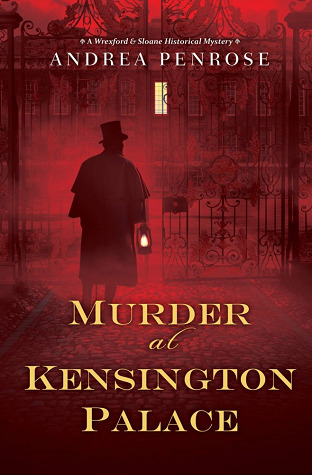 Murder at Kensington Palace (Wrexford & Sloane, #3) by
Murder at Kensington Palace (Wrexford & Sloane, #3) by 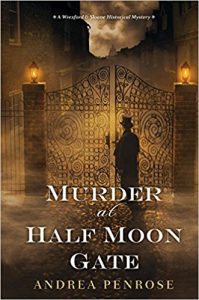 The murder that drags Wrexford and Sloane back into the fray after the events of
The murder that drags Wrexford and Sloane back into the fray after the events of 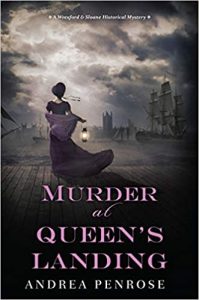 Because this case was steeped in those scientific questions, as well as the age-old question about the fine lines between genius and madness, and between interest and obsession. All the red herrings in this one, and there were many, had been electrocuted or charred to a crisp before presentation, making the solution seem just that much farther out of reach.
Because this case was steeped in those scientific questions, as well as the age-old question about the fine lines between genius and madness, and between interest and obsession. All the red herrings in this one, and there were many, had been electrocuted or charred to a crisp before presentation, making the solution seem just that much farther out of reach.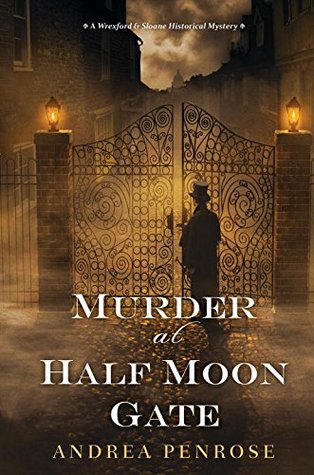 Murder at Half Moon Gate (A Wrexford & Sloane Mystery) by
Murder at Half Moon Gate (A Wrexford & Sloane Mystery) by 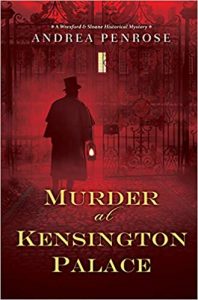 At the same time, this series has also brought other historical mysteries to mind, especially
At the same time, this series has also brought other historical mysteries to mind, especially 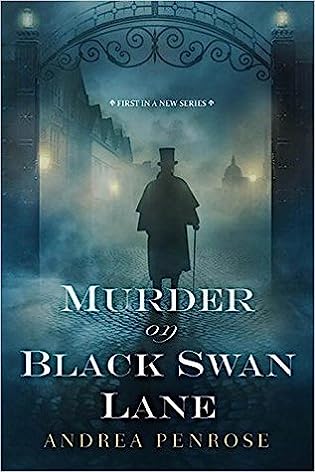 Murder on Black Swan Lane (Wrexford & Sloane, #1) by
Murder on Black Swan Lane (Wrexford & Sloane, #1) by